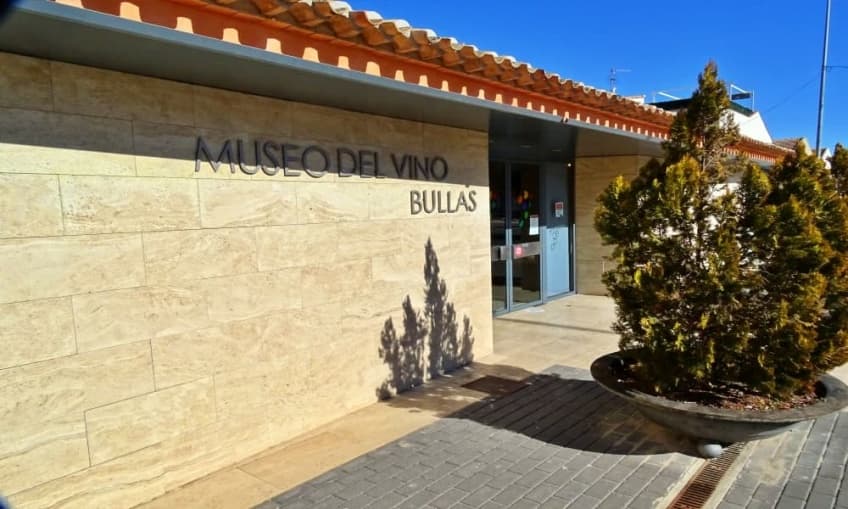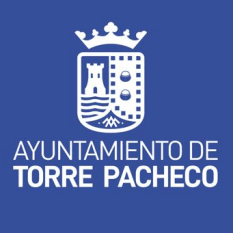Blog
»
{{catList[364].label}}
» 10 reasons to visit Bullas
10 reasons to visit Bullas

Bullas is known for its extensive land, used for cultivation and wine production, with an annual production of approximately 10 million litres. It is characterized by its abundance of water, forest landscapes, Aleppo pine forests, wine production and great natural and cultural diversity.
If you are a lover of good wine, or want to know how its production is carried out, this town has numerous wineries that are ideal for teaching visitors about this famous drink.
Here are our 10 reasons to visit Bullas:
1. Church of Our Lady of the Rosary: This is the most representative monument of the town. Its construction dates back to the 17th century, though the work ended in 1723, a few years after the community achieved its municipal independence from Cehegin. The church has a Baroque style and is very striking due to its yellow colour and large size.
This neoclassical-style construction is located in the district of La Copa, just 3 kilometres from Bullas.
4. Clock Tower: This peculiar tower had the function of indicating the time in order to regulate the irrigation schedule of the main ditch. That is why the clock face is located towards the orchards.
The tower has a height of 16 meters and its clock was made in Switzerland, being launched by Moisés Díaz on July 25, 1900.
5. Remains of the Castle of Bullas: These are the remains of a medieval castle located in the old quarter of the town. Little is known about its origin, although it seems certain that it was built by the Muslims between the 12th and 13th centuries. In 1997, these remains were declared an Asset of Cultural Interest.
6. The Castellar of Bullas: This is a castle located on the outskirts of the town, on a mountain called Peña Rubia. Currently, its ruins are in poor condition; however, this fortification is an example of the Mudejar rebellion of 1264-1266. Like the remains of the Castle of Bullas, it was declared an Asset of Cultural Interest in 1997.
7. Gastronomy: You will be fascinated by its typical foods, especially its stews, which have a lot of flavour and seasoning.
Among the most famous are the Rin Ran (a stew of tuna with potatoes and peppers), the “ajo harina” (a stew of cod and potatoes, with a thick sauce of tomato, paprika, cumin and peppers) and the “cocido” (a stew of meats, vegetables and chickpeas), among many other delicious dishes and desserts worth tasting when visiting Bullas.
9. El Aceniche Valley: This is an impressive area covered with vineyards and surrounded by the dense pine forests of the adjoining mountains. It was declared of natural landscape interest due to its great ecological value.
At the end of the valley, you will find the “Puerto del Aceniche”, where there is a stone landmark three meters high by 90 centimetres wide dating back to the 18th century, at the exact point where the municipalities of Cehegin, Mula and Lorca converge.
10. Festivities: Bullas is a very cheerful population, which celebrates its patroness saint festivities in honour of Our Lady of the Rosary in October. Likewise, in July, they commemorate Saint James the Great, in February Saint Blaise and in April Saint Mark, as well as the December and Easter festivities.
If you are a lover of good wine, or want to know how its production is carried out, this town has numerous wineries that are ideal for teaching visitors about this famous drink.
Here are our 10 reasons to visit Bullas:
1. Church of Our Lady of the Rosary: This is the most representative monument of the town. Its construction dates back to the 17th century, though the work ended in 1723, a few years after the community achieved its municipal independence from Cehegin. The church has a Baroque style and is very striking due to its yellow colour and large size.
2. Wine Museum: This is a centre for services and activities related to the promotion of tourism and culture in the area of wine production. They carry out permanent and temporary exhibitions and events related to tasting, promotion and training.
3. Church of Our Lady of Consolation: This was originally a small hermitage (17th century) dedicated to Saint Joseph, but in 1899 it was remodelled and in 1926 it was established as a parish.
3. Church of Our Lady of Consolation: This was originally a small hermitage (17th century) dedicated to Saint Joseph, but in 1899 it was remodelled and in 1926 it was established as a parish.
4. Clock Tower: This peculiar tower had the function of indicating the time in order to regulate the irrigation schedule of the main ditch. That is why the clock face is located towards the orchards.
The tower has a height of 16 meters and its clock was made in Switzerland, being launched by Moisés Díaz on July 25, 1900.
5. Remains of the Castle of Bullas: These are the remains of a medieval castle located in the old quarter of the town. Little is known about its origin, although it seems certain that it was built by the Muslims between the 12th and 13th centuries. In 1997, these remains were declared an Asset of Cultural Interest.
6. The Castellar of Bullas: This is a castle located on the outskirts of the town, on a mountain called Peña Rubia. Currently, its ruins are in poor condition; however, this fortification is an example of the Mudejar rebellion of 1264-1266. Like the remains of the Castle of Bullas, it was declared an Asset of Cultural Interest in 1997.
7. Gastronomy: You will be fascinated by its typical foods, especially its stews, which have a lot of flavour and seasoning.
Among the most famous are the Rin Ran (a stew of tuna with potatoes and peppers), the “ajo harina” (a stew of cod and potatoes, with a thick sauce of tomato, paprika, cumin and peppers) and the “cocido” (a stew of meats, vegetables and chickpeas), among many other delicious dishes and desserts worth tasting when visiting Bullas.
8. Salto del Usero: This natural space, located on the northwest slope of the Castellar hill, through which the Mula river flows, is considered to be of great natural beauty.
It is visited by many tourists annually. There is a traditional celebration known as the "Moorish queen", which takes place on the night of Saint John, when the inhabitants congregate around the pool formed by the waterfall to meet the Moorish queen and be blessed by its miraculous waters.
It is visited by many tourists annually. There is a traditional celebration known as the "Moorish queen", which takes place on the night of Saint John, when the inhabitants congregate around the pool formed by the waterfall to meet the Moorish queen and be blessed by its miraculous waters.
At the end of the valley, you will find the “Puerto del Aceniche”, where there is a stone landmark three meters high by 90 centimetres wide dating back to the 18th century, at the exact point where the municipalities of Cehegin, Mula and Lorca converge.
10. Festivities: Bullas is a very cheerful population, which celebrates its patroness saint festivities in honour of Our Lady of the Rosary in October. Likewise, in July, they commemorate Saint James the Great, in February Saint Blaise and in April Saint Mark, as well as the December and Easter festivities.
Activities in the region of Murcia
Share Article
More Articles











